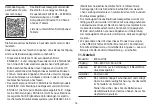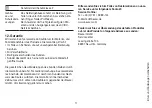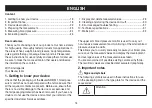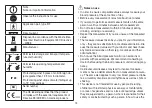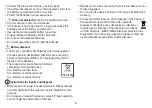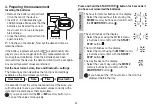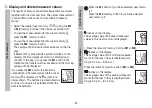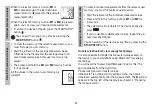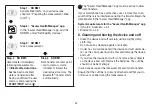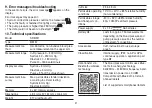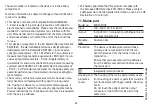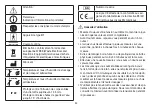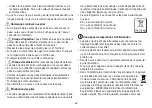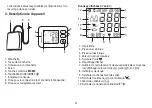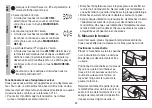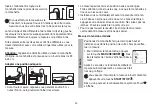
27
symptoms (skipped or premature heart beats, pulse being slow
or too fast) can be caused by factors such as heart disease,
age, physical make-up, excess stimulants, stress or lack of
sleep. Arrhythmia can only be determined through an examina-
tion by your doctor.
If the symbol
is shown on the display after the measure-
ment has been taken, repeat the measurement. Please ensure
that you rest for 5 minutes beforehand and do not speak or
move during the measurement. If the symbol
appears
frequently, please consult your doctor.
Self-diagnosis and treatment based on the measurements can
be dangerous. Always follow your GP’s instructions.
Risk indicator
The measurements can be classified and evaluated in accord-
ance with the following table.
However, these standard values serve only as a general guide-
line, as the individual blood pressure varies in different people
and different age groups etc.
It is important to consult your doctor regularly for advice. Your
doctor will tell you your individual values for normal blood
pressure as well as the value above which your blood pressure
is classified as dangerous.
The classification on the display and the scale on the unit show
which category the recorded blood pressure values fall into. If
the values of systole and diastole fall into two different cate-
gories (e.g. systole in the ’High normal’ category and diastole
in the ’Normal’ category), the graphical classification on the de-
vice always shows the higher category; for the example given
this would be ’High normal’.
Blood pressure
value category
Systole
(in mmHg)
Diastole
(in mmHg)
Action
Setting 3:
severe
hypertension
≥ 180
≥ 110
seek medical
attention
Setting 2:
moderate
hypertension
160 – 179 100 – 109
seek medical
attention
Setting 1:
mild
hypertension
140 – 159 90 – 99
regular monitoring
by doctor
High normal
130 – 139 85 – 89
regular monitoring
by doctor
Normal
120 – 129 80 – 84
self-monitoring
Optimal
< 120
< 80
self-monitoring
Source: WHO, 1999 (World Health Organization)




